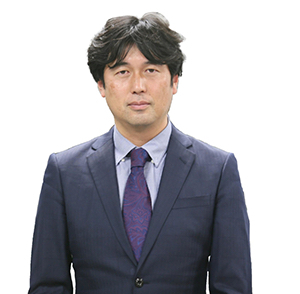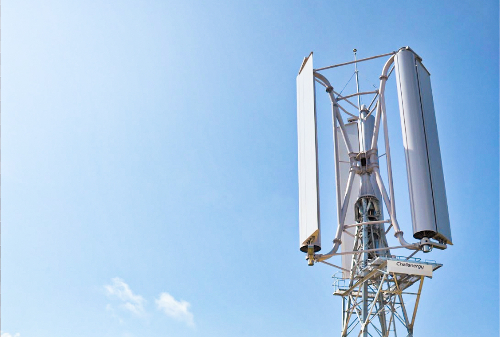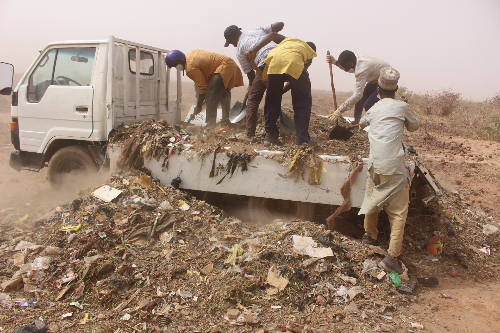J-STORIES - Due to global warming, serious damage from typhoons and heavy rain has become a frequent occurrence in Japan. Over the next 50 to 100 years, the size of typhoons and amount of heavy rainfall is expected to increase by 5% to 10%, further threatening human lives and social infrastructure.
That’s why the Japanese government is working on an ambitious national project to artificially control the force of typhoons and thus minimize damage. Its aims include both avoiding the costs of installing disaster-prevention infrastructure over a wide area, and also tapping typhoon energy and converting it to electricity – a win-win system.
The program, named Typhoon Shot, aims to cool and weaken the “warm core” – the area of a typhoon that is involved in it growing larger. As the warm core develops, its ability to collect water vapor becomes stronger, and so does the typhoon itself. Through methods such as using aircraft to spray the warm core with large quantities of cooling substances such as ice and dry ice, the program aims to weaken the biggest typhoons to a level that can be withstood by existing disaster prevention infrastructure.
![[Proposed intervention method] Numerical simulations are used to block the development mechanism(translated by J-STORIES) Source: Typhoon Science and Technology Research Center](https://storage.googleapis.com/jstories-cms.appspot.com/images/1723190588948%E8%87%AA%E5%8B%95%E7%BF%BB%E8%A8%B3.png)
In 2022, the Typhoon Shot program was selected as a research project for the Japan Cabinet Office’s Moonshot Research and Development Program. Its goal is “to realize a safe and secure society free from the threat of extreme wind and flood damage by controlling increasingly severe typhoons and rain by 2050.” It is conducting surveys and research from the perspective of meteorological and engineering approaches, impact assessments and ELSI (Ethical, Legal, and Social Implications) R&D topics.
Similar experiments were conducted by U.S. researchers from 1947, in which aircraft sprayed dry ice and other substances into the clouds around the eyes of hurricanes; and in 1969, iodine was sprayed onto Hurricane Debbie, successfully reducing wind speeds by 30%. However, the experiments stopped that year for several reasons, including when it was pointed out that they might change the direction of a hurricane and cause unexpected damage.

Nevertheless, techniques for observing and analyzing typhoon mechanisms, including more accurate typhoon forecasts, have improved, and the potential effects of typhoon control can now be confirmed using computer simulations.
In Japan, typhoon research has accelerated since the 2010s, including at Yokohama National University, where in 2021 the Typhoon Science and Technology Research Center, Japan's first specialized typhoon research institute, was set up. A joint industry-academia research system has been established with cross-cutting links between various academic disciplines such as meteorology and aeronautical science.
In a simulation of Typhoon No.15 of 2019, which struck the Boso Peninsula east of Tokyo, it was found that spraying cooling substances resulted in central pressure increasing by between 3 and 5 hPa (a weakening of the typhoon) and wind speed decreasing by between 1 and 3 m/s. These differences may seem small, but when used to calculate building damage in Kanagawa Prefecture, they would have reduced damage by 40%.

Of course, many obstacles remain, not least that the only current method of dispersing large amounts of cooling substances is to use aircraft, and that a safe and low-cost method to transport them has yet to be found. However, determined efforts are being made to bring the technology to practical use, including in 2017 when the first observation of a typhoon from an aircraft in 30 years took place.
.png)
As part of the program, professor Hidenori Fudeyasu, Senior Researcher at the Institute of Multidisciplinary Studies at Yokohama National University and Director of the Typhoon Science and Technology Research Center, is working on the theory and technology for weather control. He has been studying typhoons for 20 years, but when the 2019 typhoon hit the Boso Peninsula, he felt a sense of defeat that his recommendations had not helped the world, and that the amount of damage was no different to when he started his research.
As well as weakening already formed typhoons by spraying cooling substances on their warm cores, Fudeyasu and his colleagues are researching how to interrupt typhoon formation itself by spreading agents on the sea surface to suppress the evaporation of water vapor.
Another highlight of the program is research into using the energy of typhoons to propel unmanned ships, which then generate electrical power from the rotation of screw propellers. Regarding undersea power generation, there is already a prototype that generates energy by mixing cool deep-sea water with warmer water close to the surface. But Fudeyasu says that their work is a way to “use the power generated by typhoons, store the generated electricity on ships, and transport it directly to typhoon-hit areas.”

Fudeyasu stresses that the Typhoon Shot program is not about indiscriminately controlling typhoons but weakening them so that they can be withstood by existing infrastructure. He adds that “our goal is to have options to defend against unprecedented threats when they appear in front of us.”
He says that to speed up research both stronger international cooperation and a new generation of researchers will be required.
“[That means] global-scale research directed at a time 50 or 100 years in the future,” he says. “We must communicate the fascinating nature of such work to the younger generation of researchers.”
Translated by Tony McNicol
Top photo: Courtesy of Typhoon Science and Technology Research Center
For inquiries about this article, please contact jstories@pacificbridge.jp
***
Click here for the Japanese version of the article


_smallthumbnail.jpg)

![[Podcast] Japanese technology to supercharge human fertility (Part 3)](https://storage.googleapis.com/jstories-cms.appspot.com/images/1766558713084place-for-scientific-research-2025-03-07-14-08-49-utc%20(1)_bigthumbnail.jpeg)
![[Interview: Part 2] A digital approach to tackle child hunger in Japan with dignity](https://storage.googleapis.com/jstories-cms.appspot.com/images/1766130666509unnamed_bigthumbnail.jpg)
![[Podcast] Japanese technology to supercharge human fertility (Part 2)](https://storage.googleapis.com/jstories-cms.appspot.com/images/1765863548035unnamed-7_bigthumbnail.jpg)
![[Podcast] Japanese technology to supercharge human fertility (Part 1)](https://storage.googleapis.com/jstories-cms.appspot.com/images/1765440905082unnamed_bigthumbnail.jpg)
_bigthumbnail.jpeg)





![[Interview] When digital and physical worlds meet](https://storage.googleapis.com/jstories-cms.appspot.com/images/1747974430456unnamed-2_smallthumbnail.png)



_smallthumbnail.jpeg)

![[Interview: Part 1] From nourishing souls to feeding the hungry](https://storage.googleapis.com/jstories-cms.appspot.com/images/1763695595492unnamed_smallthumbnail.jpg)


大平様 はじめましてNPOエスコット、代表理事の藤本と申します。 エスコットでは房総半島台風を機に低層冷水汲み上げ(湧昇)による台風制御技術を芝浦工業大学との共同研究してまいりました。 以下概要を記したURLとなります。 https://npo-escot.org/wave-actuated-...Read more
あ